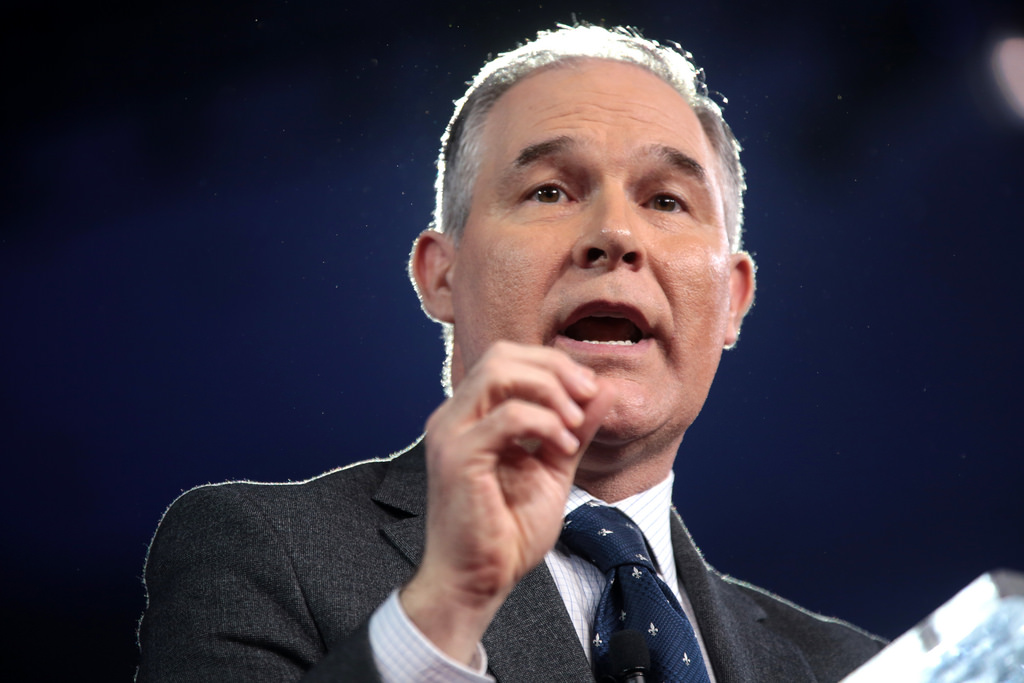 President Biden’s May 2021 Executive Order on Climate-Related Financial Risk is showing results. While the financial world is still waiting for key climate-related rules from several financial regulators, including the Security Exchange Commission (SEC), there has been some forward progress in recent weeks. The new regulations released by a group of independent federal agencies still demonstrate a partisan divide on the subject of climate-related financial risk, but they are a positive step towards recognizing and addressing climate-related financial risk alongside other risks that the financial sector has been considering for years.
President Biden’s May 2021 Executive Order on Climate-Related Financial Risk is showing results. While the financial world is still waiting for key climate-related rules from several financial regulators, including the Security Exchange Commission (SEC), there has been some forward progress in recent weeks. The new regulations released by a group of independent federal agencies still demonstrate a partisan divide on the subject of climate-related financial risk, but they are a positive step towards recognizing and addressing climate-related financial risk alongside other risks that the financial sector has been considering for years.
New Interagency Principles
On October 24th, the Office of the Comptroller of the Currency (OCC), Treasury, Board of Governors of the Federal Reserve System (Fed), and the Federal Deposit Insurance Corporation (FDIC) released final interagency guidance for Large Financial Institutions (the Principles) (defined as banks with more than $100 billion in total consolidated assets) targeting climate-related financial risk. The Principles seek to apply existing risk-management frameworks to the financial threats posed by climate change, in terms of both transition risk and physical risks.
The Principles offer boards and management of Large Financial Institutions a “high-level framework” for climate-related risk management but are not binding. Instead, they are meant to aid in the “safe and sound” management of exposures to climate-related risks by promoting a consistent understanding of the effective management of climate-related financial risks. They cover six primary areas where climate-related risk should be managed: governance; policies, procedures, and limits; strategic planning; risk management; data, risk measurement, and reporting; and scenario analysis. The Principles are also instructive in how climate-related financial risk can appear and be addressed in other established risk categories like credit and liquidity. Their issuance indicates that the federal agencies overseeing America’s banking institutions recognize the financial impact that climate change is having on the banking system and want financial institutions to consider these risks carefully and in a uniform way, even as they are careful not to be proscriptive about exactly what Large Financial Institutions do to manage these risks.
Community Reinvestment Act Update
The Fed, FDIC and OCC also recently released a final rule (the Rule) outlining modernized implementation of The Community Reinvestment Act of 1977 (Act), which applies to federally insured banks. The purpose of the Act is to address systemic, historic inequities in access to credit by encouraging banks to meet the needs of socioeconomically disadvantaged members of their communities in a financially sound way. The Act’s regulations were last updated in 2005. Under the Act, banks are graded based on how well they meet their communities’ needs on a scale of “substantial noncompliance” to “outstanding.”
While there are many components of the Rule, one notable aspect is the inclusion of investments in banks’ communities’ preparedness for “weather resiliency” and “disasters” under the banner of community development activities for which banks receive credit when they are examined for compliance with the Act’s tenets. Community development projects serve low- or moderate-income areas, designated disaster areas, and other distressed or underserved non-metropolitan areas with loans, investments, and services. Providing more of these services earns banks a higher compliance score and incentives in the form of credits under the Act. This update to the Rule is crucial as many of these areas are frequently impacted by climate-related events and are projected to suffer disproportionately due to climate change, and in the case of disaster areas, have already recently suffered dramatically. The Rule will open another avenue for banks to receive credit for Act compliance for aiding their communities as low- and moderate-income neighborhoods strive to become more resilient to climate risk. In turn, the banks will be better protected if their communities are hit by a climate-related event which can drive a spike in the local need for financial assistance that the federal government may not immediately be able to meet.
It’s not hard to see why financial regulators view climate change as an existential threat to the banking system. In just the first nine months of 2023, the number of billion-dollar disasters in the United States reached a record high, with 23 climate-linked events already pummeling the country. In 2022 alone, a report by the National Oceanic and Atmospheric Administration (NOAA) estimated the cost of climate change impacts at more than $165 billion dollars. NOAA estimates the cost of large scale (greater than $1 billion dollars in damage) climate change related events at over $2.630 trillion in the last four decades. Fortunately, financial regulators are convinced that climate change risk bears managing concurrently with traditional risks that market watchers focus on, like inflation.
Navigating the Political Process
Chairman of the Fed Jerome Powell was careful to note that the decision to release the Principles is not rooted in attempting to turn the Fed into a “climate policymaker” but is “focused on prudent and appropriate risk management” as the Fed, and banks, are “in the early stages of understanding and measuring the financial risks posed by climate change and how best to manage them.” He further elaborated that “banks need to understand, and appropriately manage, their material risks, including the financial risks of climate change.” These sentiments have been broadly echoed by the heads of other independent agencies working to address climate risk in the financial sector who are careful to work within the established bounds of their authority. The Principles and the Rule do not seek to address the root causes of climate change. Instead, they encourage recognition of the ways climate change is impacting the banking sector and seek to provide ways to mitigate the risk.
Financial regulators have been engaged in lengthy rulemaking processes when it comes to climate risk, perhaps taking more time than the Administration had hoped. However, even at a slow pace they are critical actors in the quest to address climate-related financial risk. The challenge of Congressional inaction and the politicization of climate change means any legislation accounting for climate risk is unlikely to pass. Robust regulation is the best alternative. Independent agencies like the Fed and FDIC are bipartisan: for example the FDIC is required by law to have no more than three members of the Board of Directors from a single political party. They are insulated from extreme pressure from the executive branch because their members can only be removed for cause. They do face internal division due to their composition, and indeed neither Republican member of the Fed voted to pass the Principles. Governor Michelle Bowman released a dissenting statement. Governor Bowman does not assert that climate risk does not exist, nor does she posit that it is not worth banks assessing; she notes that it is “an important public policy issue.” Her chief complaint is that climate-related risks are singled out for special treatment. But even if the two Republican Governors disagree with some aspects of the Principles and the Rule, their involvement in drafting can be valuable. Gathering support and consensus is not something that agencies take lightly, especially when a rule is likely to be divisive. The input of both parties can be critical to the regulation’s robustness and the likelihood that it is sustained in court.
The political headwinds in the United States facing climate and environmentally focused rules that have recently been promulgated, or are in the process of finalization, are significant. The Republican controlled House has been outspoken about their opposition rules that treat considerations about the environment as financial considerations. Republican attorneys general have sued to prevent other agencies’ rules that account for environmental factors in financial decision making from going into effect. Individuals have also taken similar action. On the other hand, blue states, especially California with Senate Bill 261, have been trying to fill the void left by the precarious federal regulatory landscape. The action by the Fed and its partners on climate risk represents an important step for the federal government. Despite the fact that action on climate risk remains mostly partisan, rules such as these will force regulated entities to take a harder look at the climate-related risks facing them. Hopefully it foreshadows momentum behind normalizing climate risk within typical risk analysis frameworks which will pave the way for further action by the administrative state in this critically important area.
Chloe Field is the Initiative on Climate Risk and Resilience Law Fellow at the Sabin Center for Climate Change at Columbia Law School.





